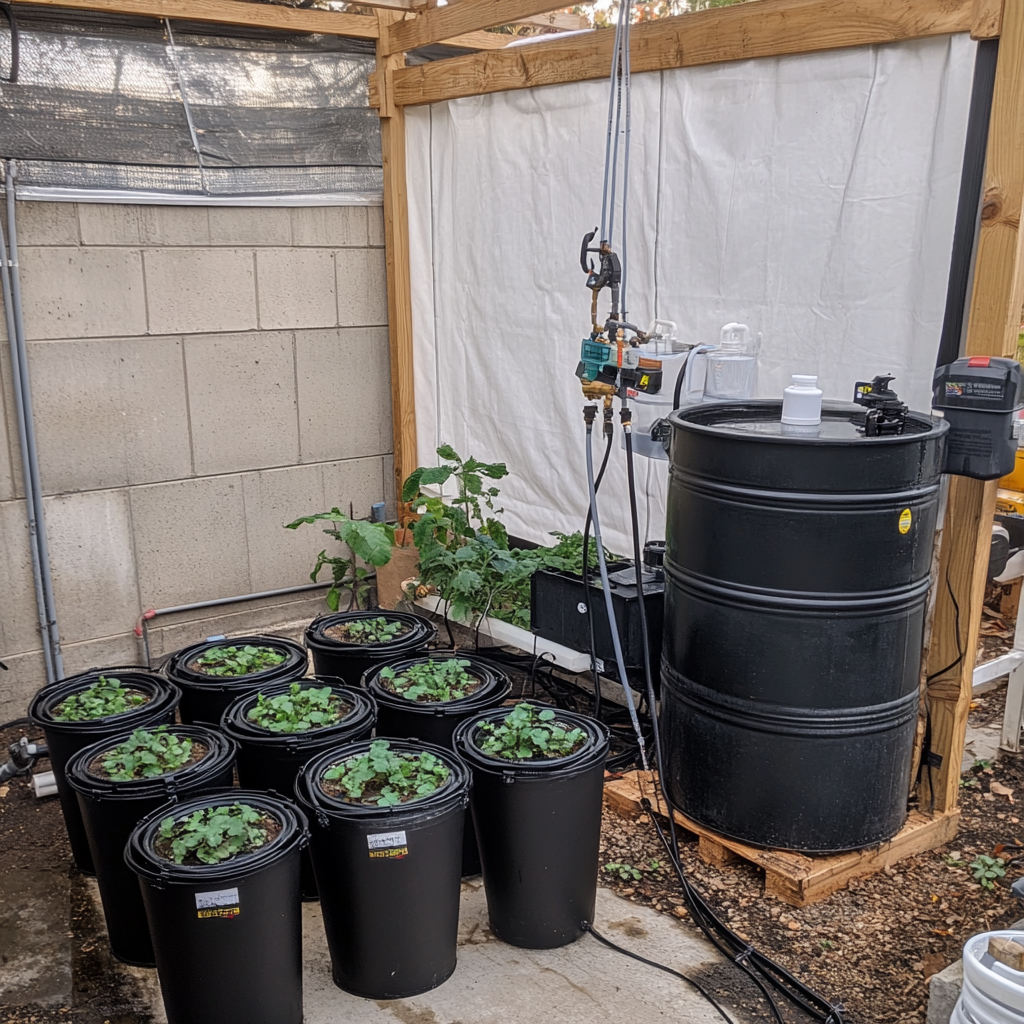We may earn a small commission when you purchase through our affiliate links. This helps fund Quiet Meadows Homesteading and our mission to promote self-reliance. We appreciate your support!
Hydroponics for Beginners: Grow Food Without Soil
Have you ever wondered how you can grow fresh, delicious vegetables without any soil? So did I, that is, until I discovered hydroponics. It sounds like high-tech, but it’s much easier than you might think. In this post, I’ll show you the basics of hydroponic gardening, share my own experiences, and give you practical tips to start your system today.
What Is Hydroponics?
Hydroponics is a method of growing plants without soil. Instead, plants grow in a nutrient-rich water solution. First, you suspend the plants using a medium like clay pellets. Next, you feed them with water and nutrients. All the water conservationists should be jumping up and down for joy right about now, because this method uses less water than traditional gardening and can produce food faster. Plus, it works indoors or outdoors, making it versatile. oh, and did I forget to mention, It also takes up much less space than traditional gardens! That’s because the plant roots aren’t fighting over the limited nutrients in the soil.
Why Choose Hydroponics?
Hydroponics offers many benefits. For one, you can grow food in small spaces. Moreover, it lets you control the nutrients your plants receive, which often leads to faster growth. Also, you don’t need a lot of messy soil. Finally, hydroponics can be fun and rewarding. If you want to save water and enjoy fresh produce year-round, this might be the perfect system for you.
Tip: If you’re looking for hydroponic kits or nutrient solutions, check out our recommended products here.
Getting Started with Your Hydroponic System
1. Choose Your System
There are several hydroponic systems. For beginners, I recommend starting with one of these:
- Nutrient Film Technique (NFT): Thin films of nutrient solution flow over the roots.
- Deep Water Culture (DWC): Plants float on water rich with nutrients.
- Wick System: A passive system that uses wicks to draw nutrient solution to the plants.
- Flood and Drain (Ebb & Flow): Nutrient-rich solution periodically floods and then drains, ensuring both nutrient delivery and root aeration.
Each system has its own perks. For example, DWC is simple and low-cost. NFT requires a bit more setup but works well for leafy greens. Choose the system that fits your space and budget.
2. Gather Essential Supplies
You’ll need a few key items to get started:
- Containers or Grow Trays: First, use containers or grow trays to hold your water and plants.
- Growing Medium: Next, choose a growing medium like clay pellets or rockwool to support plant roots.
- Nutrient Solution: Then, mix in a nutrient solution specifically designed for hydroponics to supply essential nutrients.
- pH Test Kit: Finally, add a pH test kit to help maintain the proper water balance.
Tip: Additionally, check out our recommended product links for top-quality hydroponic supplies and nutrient solutions to help set up your system affordably.
3. Set Up Your System
Now, set up your hydroponic system. First, arrange your grow trays or containers in a sunny spot or under grow lights if you’re indoors. Next, add your growing medium and place your plants. Then, mix your nutrient solution and fill your system with water. Finally, test the pH and adjust as needed. It’s a simple process when you break it down step by step.
4. Maintenance and Troubleshooting
Hydroponics is not “set it and forget it.” You must check the system regularly:
- Monitor Water Levels: First, refill the water as it evaporates.
- Check pH and Nutrient Levels: Next, test the water every few days to ensure balance.
- Inspect Plants: Then, look for signs of stress or disease.
- Clean the System: Finally, perform regular cleaning to prevent blockages and algae buildup.
Tip: Explore our recommended product links for a handy hydroponics maintenance guide and cleaning kits to help keep your system in top shape. Learn more here.
My Personal Experience
My first hydroponics setup was a Deep Water Culture. I built a simple DWC system in my greenhouse. If you would like to read more about the actual process and supplies I used to build the system, let me know by leaving a comment below.
At first, maintaining the pH balance proved challenging, but I learned quickly. I discovered that a digital pH meter could save time and reduce frustration. Over time, that small system transformed into a thriving garden. Each success taught me more about self-reliance and sustainable living.
Final Thoughts
Hydroponics is a game changer. Not only does it allow you to grow food in tight spaces, but it also gives you control over your garden’s health. By following these steps and learning along the way, you too can enjoy the rewards of a flourishing hydroponic garden. Remember, Every Great Homestead Started with w Single Seed.
If you found these tips helpful, subscribe for more practical advice on sustainable living and homesteading. Also, feel free to leave a comment with any questions or share your hydroponics journey. And don’t forget to check out our online store !
Happy growing, and here’s to a fresh, self-sufficient future!
Related Resources: USDA National Agricultural Library

